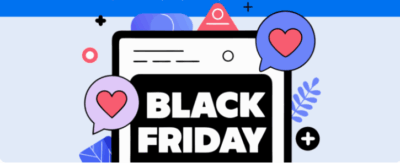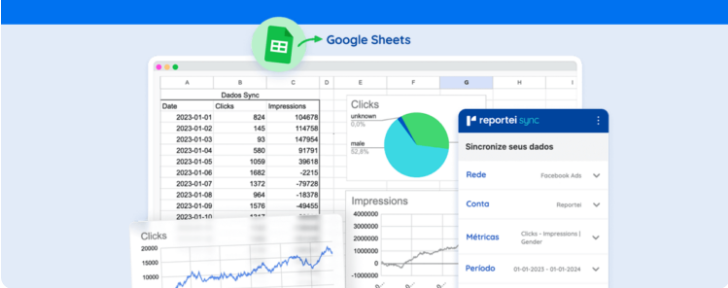Learn how to prepare for Black Friday 2025 and check out tips that will help increase conversions on your site.
The Black Friday 2025 is approaching and with it come great opportunities for those who want to sell more and strengthen relationships with customers.
After all, this traditional global retail date has consolidated in Brazil as one of the strongest moments in the commercial calendar, driving planned purchases, product replenishment, and even the discovery of new brands.
But despite the focus on promotions, Black Friday is not about creating last-minute discounts. This is because consistent results appear when there is preparation, not improvisation.
Therefore, in this guide, we will show you which steps can make a difference in your strategies and increase conversions on this significant date. Follow along.
When is Black Friday 2025
The Black Friday 2025 will be on November 28th, the last Friday of the month as already expected by consumers.
However, preparation should begin early, not only to avoid unforeseen issues but also to fully leverage periods gaining momentum, such as:
- Pre-Black Friday warm-up with promotions and early communication to spark public interest.
- Cyber Monday the date following Black Friday that focuses on digital purchases.
- Black November or Black Week continuous offers throughout the month or in the week leading up to the last Friday of November.
In addition to extending conversion time, these strategies help your audience organize to purchase from you, especially if your brand accompanies the consumer throughout this journey with clarity, consistency, and transparency.
5 tips to prepare for Black Friday 2025
Now that you know when Black Friday takes place and the most relevant moments around it, it’s worth checking out our checklist with actions that directly influence increased conversions during this period, customer satisfaction, and the quality of future decisions. Let’s go.
1. Create a clear offer
To begin, there is no Black Friday without an attractive offer that the customer understands immediately.
This means setting conditions consistent with the market and communicating the value of the promotion straightforwardly, such as the financial benefit, what it includes, the timeline, and whether stock is limited.
Another important point is to avoid the so-called half of the double, a practice that harms brand reputation and repels potential buyers.
Therefore, be completely transparent about prices and discounts to build trust, which will not only help to sell more but also be relevant for retaining new customers.
2. Develop a good infrastructure
Even with the best promotion in the world, if the site doesn’t load, the sale won’t happen.
Therefore, it’s essential to carefully review the entire infrastructure, including aspects such as
- Loading speed, especially on mobile,
- Server capacity for high access volume,
- Functionality of buttons, cart, and login,
- Payment methods and anti-fraud,
- Logistic integrations in marketplaces or ecommerce own.
After reviewing all these points, it’s important to test the end-to-end process on different devices as your clients would.
After all, the experience needs to be stable all the time, especially when traffic increases on Black Friday 2025.
3. Focus on the landing page experience
The landing page is where the final decision happens. Therefore, in addition to the infrastructure we talked about above, the conversion page should offer the client a clear and distraction-free experience.
Thus, when planning it, it’s important to offer the user:
- Direct information about products and payment conditions,
- A clean layout with functional visual hierarchy,
- Identity aligned with the campaign at all touchpoints,
- Well-positioned and easy-to-read CTAs,
- Social proof that generates credibility, such as customer reviews and testimonials.
Along with this, ensure accessibility for all audiences: appropriate contrast, large buttons, readable texts, and simple navigation make a difference and help reduce bounce and cart abandonment rates.
4. Plan segmentation and promotional campaigns
But it’s no use having a great offer if the public doesn’t know about it, right?
That’s why segmentation and promotion should walk hand in hand from the beginning of Black Friday planning, both to show the right offer to those who have already shown interest, and to attract new consumers.
Thus, organize your segmentation in advance so the brand speaks directly to those who have already shown interest in purchasing. For this, it’s worthwhile:
- Creating specific lists based on behavior and purchase history,
- Setting automations for those who visited strategic pages or abandoned the cart,
- Activating lookalike audiences from your best customers,
- Building VIP lists that receive early benefits.
By understanding what the consumer is looking for and where they are in the journey, communication becomes more relevant and conversion tends to increase.
In fact, the promotion should be planned to warm up public interest over the weeks and consider channels such as email marketing, progressive ad campaigns, and integration between social networks, paid media, and direct sales channels like WhatsApp.
The more consistent and personalized this communication is, the greater the results.
5. Do post-sale follow-up and analyze the results
Finally, many see Black Friday as an event that ends with the purchase confirmation.
However, the true differentiator lies in what happens afterward. Therefore, it’s essential to organize a post-sale process that includes:
- Clear communication to customers about delivery and timelines,
- Available and efficient support during and after Black Friday 2025,
- Satisfaction surveys to identify possible improvements,
- Retention strategies to turn a one-time buyer into a repeat customer.
Additionally, it’s important to conduct a detailed analysis of the campaign’s performance by observing metrics relevant to the date, such as conversion per channel, best-selling items, average ticket, and ROI.
From this monitoring, it’s possible to identify what went well and what can be improved. Thus, learning transforms into insights for the next year’s Black Friday.
Practical checklist for guidance
To facilitate your organization for this and future editions of Black Friday, here’s a simple model of what cannot be missed:
| Stage | What to do | |
| Strategy and offers | Select products, targets, and commercial conditions. | |
| Infrastructure | Test site, checkout, mobile, and integrations. | |
| Landing page | Create pages optimized for conversion. | |
| Segmentation and content | Organize public data, automations, campaign pieces, and messages. | |
| Pre-Black Friday | Generate expectation and gradual public activation. | |
| Post-sale and analysis | Monitor orders, customer satisfaction, and metrics. |
It’s worth remembering that each stage connects with the next, forming a continuous cycle of learning and evolution.
Count on Reportei for your Black Friday 2025 analyses.
Undoubtedly, preparing, monitoring, and measuring Black Friday results is much more strategic when data is centralized and structured on a single platform.
Therefore, you can count on Reportei to:
- Monitor performance in customized dashboards,
- Create comparative reports of previous years’ Black Fridays,
- Observe trends in real-time to optimize campaigns,
- Make decisions based on reliable indicators.
And for those who want to prepare in advance, an special incentive is now live: Reportei’s Blue Month with up to 30 discount on annual plans, including the combined hiring of Reportei and Flux our post scheduling tool.
This means this is the best opportunity of the year to have a platform by your side that facilitates all your analyses and accelerates decisions during the biggest sales event of the calendar.
Take advantage of the promotion right now.
FAQ – Frequently asked questions about Black Friday 2025
Below, we’ve gathered quick answers on topics that always generate questions before the big date. Check it out.
This year, Black Friday will take place on November 28th, always on the last Friday of the month.
Not necessarily. Many brands work with Black Week, Black November, and Cyber Monday, keeping promotions for a longer period.
Of course. Even with less structure, well-planned and targeted offers bring excellent results.
Without a doubt, electronics and fashion are still sales leaders on the date. But the products that convert the most are those with strong demand from your own audience.
Transparency and price history help consumers trust your brand. Therefore, always maintain clarity when advertising your offers.
Monitoring KPIs such as conversion, average ticket, ROI, and impact by channel is essential, and tools like Reportei speed up this process.



